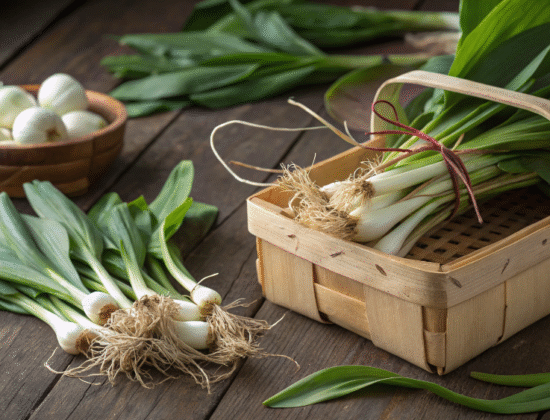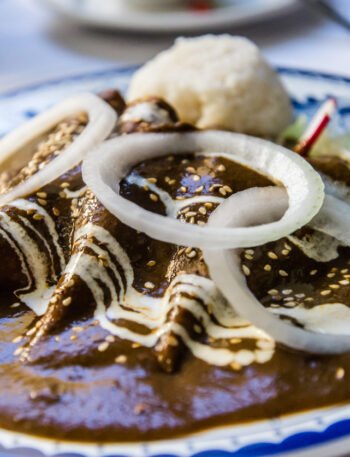If you’ve ever spent time in Appalachia, especially in the mountains of West Virginia, you’ve probably heard of ramps. They might not look like much, just a leafy green with a small white bulb, but once you’ve smelled one, you won’t forget it. Ramps are wild onions, and they’ve been a beloved part of mountain life for generations. These days, they’re not just for backwoods cooking anymore. Ramps have found their way onto fancy menus and into high-end restaurants. But before they became trendy, they were a sign that spring had finally arrived and sometimes, a reason to skip school.
What Are Ramps, Exactly?
Ramps (Allium tricoccum) are a type of wild onion that grow in shady, wooded areas across the eastern United States. They have broad green leaves, reddish-purple stems, and small white bulbs that resemble scallions. Their flavor is strong, like a mix of garlic and onion, and so is their smell.
They usually pop up in early spring, around March or April, depending on the weather. Because they’re only available for a short time each year, ramps are one of the first wild edibles people hunt for after winter. In the mountains, especially in West Virginia, hunting for ramps is a tradition. People go into the woods with buckets or sacks and dig them up by hand, often choosing secret spots that they don’t share with anyone.
A Stinky Rite of Passage
If you grew up in a ramp-loving area, you probably have a few ramp stories of your own. One of the most famous is the legendary ramp stench that could clear a classroom.
Ramps are delicious, but they are also powerful. Eat a bunch of them raw, especially the bulbs, and your breath and sweat will smell like garlic and onions for days. In some West Virginia schools, kids who ate ramps were sent home early or told to stay away until they had time to air out. Some students were even teased or avoided just because they smelled so strong.
And yet, for many families, that was part of the fun. Eating ramps, especially raw ones, was almost a dare, a rite of spring that proved your mountain roots ran deep.
A Long History in the Mountains
Long before ramps were served at upscale restaurants, they were an important part of Appalachian food traditions. Indigenous people in the region were the first to use ramps, harvesting them each spring as a fresh green after a long winter without much fresh food. Later, European settlers learned from Native communities and adopted ramps into their diets.
In mountain communities, ramps were often cooked with potatoes, scrambled with eggs, fried in bacon grease, or added to cornbread. Some families made ramp soup, while others pickled them to enjoy year-round. They were also thought to be a natural medicine, something that cleansed the blood after winter and helped kick off the warmer season with energy.
Greens and Bulbs: How Each Is Used
One of the best things about ramps is that the entire plant is edible, and different parts are used in different ways.
The greens, or leaves, are tender and full of flavor. They can be sautéed like spinach, chopped into scrambled eggs, blended into pestos, or even served raw in salads. Their flavor is bold but not overwhelming, and many people find the greens easier to cook with than the bulbs. They also make excellent additions to soups, rice dishes, and compound butters.
The bulbs are smaller, denser, and much more pungent. They can be eaten raw for a serious flavor punch, but they’re more commonly cooked to mellow them out. Roasting or pan-frying the bulbs in a little oil or bacon grease brings out their natural sweetness and savory depth. You can also pickle the bulbs or use them in place of onions in recipes like hash, soups, or savory pies.
Because ramps grow slowly and take years to return once harvested, many foragers now recommend taking only one leaf per plant and leaving the bulb in place. This way, ramp patches can keep growing year after year.
Festivals, Family, and Feasts
In West Virginia, ramp season isn’t just about cooking. It’s a reason to gather. Every spring, towns across the state host ramp festivals, where you’ll find fried ramps, ramp casseroles, ramp dips, and even ramp-themed desserts.
The Helvetia Ramp Supper, Richwood’s Feast of the Ramson, and the Elkins Ramps and Rails Festival are just a few of the many events where locals and visitors come together to celebrate this bold and unforgettable plant. These festivals are more than just a place to eat. They’re a chance to hear old stories, enjoy music, and connect with the culture that surrounds ramps.
From Forest Floor to Fine Dining
In the last couple of decades, ramps have gone from a local delicacy to a nationwide culinary trend. Chefs from New York to Los Angeles now feature ramps on spring menus, often treating them like seasonal gold. You might see grilled ramps with steak, ramp pesto with fresh pasta, or fermented ramps served with artisan cheeses.
Their popularity has also sparked conversation about sustainability. Because of how long they take to mature, wild ramps are vulnerable to overharvesting. Some chefs and foragers now grow ramps on private land or harvest only the greens to help protect wild populations.
A Modern Taste of the Past
For those who grew up with ramps, their sudden fame can be surprising. Something that was once a humble part of mountain cooking now shows up on plates in expensive restaurants. But it’s also a source of pride. A food that was once overlooked is now being celebrated for its bold flavor and deep cultural roots.
Ramps remind us that food is more than just what we eat. It’s about memory, identity, and tradition. Whether you’re biting into a ramp at a festival in a small West Virginia town or tasting it for the first time at a chef’s table, you’re experiencing something with history and heart.
Quick Ramp Facts
Season: Early spring (March to May)
Flavor: Bold mix of garlic and onion
Grows in: Shady forests in the Appalachian region
Used in: Eggs, potatoes, soups, pestos, pickles, pastas
Other names: Wild leeks, spring onions (not to be confused with green onions)
Edible parts: Leaves and bulbs, used both raw and cooked
If you get a chance to try ramps, go for it. Just maybe not the day before you ride the school bus.




